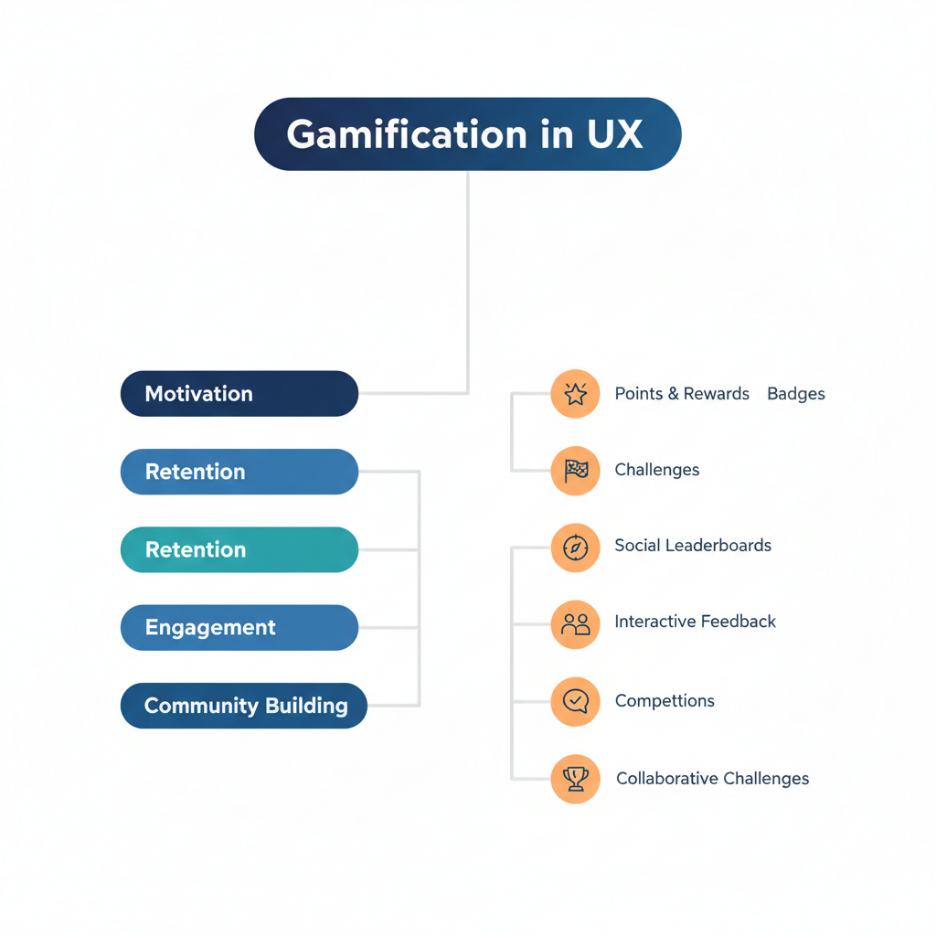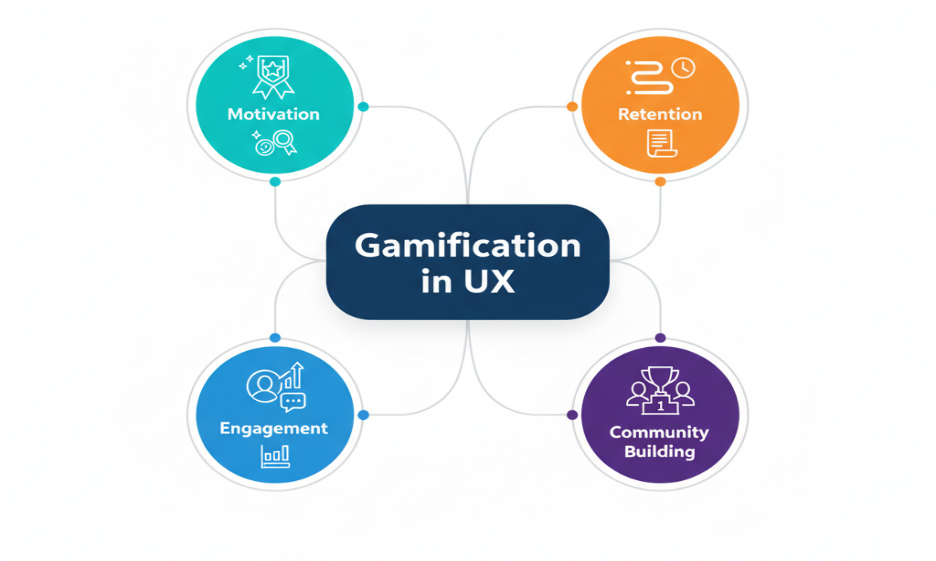In today’s highly competitive digital landscape, creating a seamless user experience (UX) is no longer just about intuitive design and smooth navigation. Modern users crave engagement, interaction, and motivation that goes beyond simply completing tasks on a website or app. This is where gamification comes into play. Leveraging elements of game design in non-gaming contexts can transform user interactions, foster loyalty, and improve overall engagement.
At Curiosity Tech, we’ve seen firsthand how integrating gamification strategies in UX can not only boost user satisfaction but also elevate conversion rates. By embedding playful yet purposeful mechanics into digital experiences, businesses can keep their audiences invested and returning for more.
What is Gamification in UX?
Gamification in UX is the application of game design principles—like points, badges, leaderboards, progress bars, and challenges—to non-gaming digital products. The goal isn’t to make users “play” a game, but rather to motivate and influence user behavior, making tasks more engaging and rewarding.
Some common gamification elements include:
| Gamification Element | Purpose in UX | Example |
| Points & Rewards | Encourage repeated actions | Reward users for completing profiles or tutorials |
| Badges & Achievements | Provide recognition and status | Badges for reaching milestones or completing challenges |
| Leaderboards | Foster healthy competition | Ranking top contributors in community forums |
| Progress Bars | Visualize completion | Showing progress in onboarding steps or courses |
| Challenges & Quests | Increase motivation | Daily challenges for app engagement or loyalty programs |
How Gamification Boosts Engagement
Gamification drives engagement by tapping into intrinsic and extrinsic motivators.
- Enhancing Motivation – Gamified experiences activate dopamine-driven reward loops. Every badge, point, or achievement gives users a sense of accomplishment.
- Improving Retention – When users are engaged through challenges and rewards, they are more likely to return. Apps and websites that integrate gamification often see higher retention rates.
- Encouraging Desired Behavior – Want users to complete a tutorial, fill out a survey, or explore new features? Gamification guides users naturally toward these goals.
- Fostering Community – Leaderboards and social challenges create a sense of community and competition, encouraging users to interact with each other.
- Providing Feedback – Real-time feedback through progress bars or achievement notifications informs users about their journey, making the experience more transparent and interactive.
Hierarchical Diagram: Gamification Strategy in UX

This structure highlights that gamification is not just about adding “fun” but strategically improving key UX metrics like retention, engagement, and loyalty.
Infographic Suggestion: Gamification Benefits

Real-Life Applications
- E-learning Platforms – Platforms like Duolingo use streaks, badges, and progress bars to keep learners motivated daily.
- Fitness Apps – Apps like Fitbit gamify exercise routines with achievements and competitive leaderboards.
- E-commerce – Loyalty programs, reward points, and levels encourage users to explore products and complete purchases.
At Curiosity Tech, we integrate gamification in UX for web and app projects by analyzing user behavior and designing engagement loops tailored to the target audience. Whether it’s a corporate website, e-learning platform, or interactive app, our approach ensures users remain invested throughout their digital journey.
Human-Centric Gamification: Best Practices
- Keep it meaningful: Rewards and challenges must align with user goals.
- Balance complexity: Gamification should simplify, not complicate the UX.
- Encourage progression: Users should feel continuous growth, not just random rewards.
- Leverage social interaction: Collaborative and competitive features enhance engagement.
- Monitor metrics: Track how gamification affects behavior and adjust as needed.
By following these principles, businesses can create a user experience that is both fun and functional, ensuring long-term engagement.
Conclusion
Gamification is more than a trend—it’s a powerful UX strategy that enhances motivation, retention, and overall engagement. When thoughtfully implemented, it transforms routine digital interactions into compelling experiences that users genuinely enjoy. At Curiosity Tech, our expertise in gamified UX ensures that digital products are not only user-friendly but also highly engaging, fostering loyalty and long-term user satisfaction.
Digital experiences that incorporate gamification successfully bridge the gap between usability and enjoyment, ensuring users keep coming back, interacting, and sharing. In 2025, businesses ignoring gamification in UX risk losing out on an audience that values interaction, engagement, and play in every digital touchpoint.



